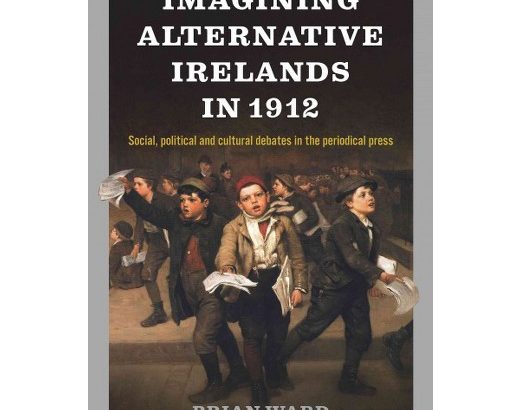Imagining Alternative Irelands in 1912: Cultural Discourse in the Periodical Press
Brian Ward (Four Courts Press, €50)
Felix M. Larkin
Historians should always be conscious of the importance of contingency in shaping events.
As the distinguished American historian David McCullough, biographer of John Adams and Harry Truman, says: “Nothing ever had to happen the way it happened. History could have gone off in any number of different directions in any number of different ways at almost any point, just as your own life can.”
James Joyce anticipated this idea when, during the class that Stephen Dedalus teaches in the ‘Nestor’ episode of Ulysses, he wonders in his own mind about things that might have happened – the ‘what if’ questions of history – and speculates whether “was that only possible which came to pass”.
One means of recapturing a sense of the infinite possibilities that might have, but did not, come to pass at a point in history is through the writers of the period in question – especially, in the modern era, those writing in newspapers and periodicals.
Events
Not only did they not know what was coming next and how things were going to turn out, but often they were writing with a view to influencing events as they unfolded and arguing for their particular preferences among the infinite possibilities that presented themselves.
This book focuses on 1912, the year when it seemed Home Rule for Ireland had finally been achieved, and it seeks “to uncover and explore different social, cultural and literary conceptions of Ireland based around the promise of a Home Rule government”.
These different conceptions are the imagined “alternative Irelands” of the book’s title. The author, Brian Ward, refers to some seven periodicals and five regional weekly newspapers, and he tells us that “the little worlds that they created … were presented to the Irish readership as a model for the future Irish state”.
What wasn’t known in 1912 was that Home Rule would be a busted flush, and that when Ireland achieved independence we would look back not to 1912 as “the foundational year of Irish independence”, but rather to 1916.
The Ireland that emerged after 1916 is usually portrayed as fundamentally different from the one envisaged for the post-Home Rule period. In some respects, it was. However, one of the more interesting conclusions of this study is how “many of the key conceptions of nationalism that fed into the creation of the [Irish] Free State were already evident and in practice a decade prior to the Irish revolution”.
In other words, the changes in culture and society – as distinct from those in the elite political sphere – in the period 1912-1922 were not that fundamental after all, and everyday life in a Home Rule Ireland would probably have been much the same as that in the Irish Free State in the 1920s.
Ward writes: “To what extent a Home Rule Ireland would have been more open, cosmopolitan, or inclusive than the Free State is ultimately unknowable, but it would have required a definitive break with decades of nationalist rhetoric.”
The aspects of social and cultural life that this book highlights include ‘impure’ literature, female suffrage, national and ‘foreign’ sports, music and the literary revival as they were represented in the periodicals and newspapers under consideration.
Much of the fascinating material thus unearthed may appear to the reader as somewhat random – giving the book a curious ‘mixum-gatherum’ quality – but that belies the solid research and academic purpose that underpins this volume.
It provides a useful corrective to the “All changed, changed utterly” trope commonly used in relation to the 1916 Rising.



